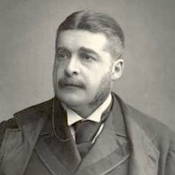Arthur Sullivan
Composer
Biography
Arthur Sullivan
Demonstrating a great musical talent even as a young boy, Sir Arthur Sullivan was always destined for a musical career. He studied as a chorister at the Chapel Royal, after having a full grounding in all band instruments from his father, Army bandmaster Thomas Sullivan. His published his first composition at the age of 13, and went on to win the very first Mendelssohn Scholarship. His studies took him to the Royal Academy of Music, and later to the Leipzig Conservatory.
Like many musicians, Sullivan took on many roles to try and keep himself financially stable. When he returned to London, he worked as an organist, conductor, and music teacher, as well as musical editor. Before he began to work on operas, Sullivan had his first great success with a work for stage, when he wrote the incidental music for Shakespeare's The Tempest, in 1861. His appointment to the Royal Opera House, led him to compose the ballet L'ile Enchantee in 1864, and his first commissions as a composer started to come in. He wrote choral and sacred works, oratorios, and more incidental music, as well as his first opera Cox and Box.
Now, Sullivan is best remembered for his operatic compositions, and most importantly his incredibly successful collaboration with W. S. Gilbert. Under the keen eye of impresario Richard D'Oyly Carte, Sullivan and Gilbert were brought together, in an effort to create Carte's dream of a true British opera. Their first work together, the one-act Trial By Jury was a hit, and led to a subsequent 14 years of successful operatic creations together.
Sullivan never stopped writing sacred and incidental music throughout this period, and in 1883, he was given a knighthood to honor his services to British music.
Known For
Shows
Shows associated with Arthur Sullivan
Monologues
Monologues from shows associated with Arthur Sullivan
Songs
Songs from shows associated with Arthur Sullivan
Scenes
Scenes from shows associated with Arthur Sullivan
Videos
Videos associated with Arthur Sullivan
Quizzes
Quizzes associated with Arthur Sullivan
Learning Modules
Learning modules associated with Arthur Sullivan
Additional Information
N/A
